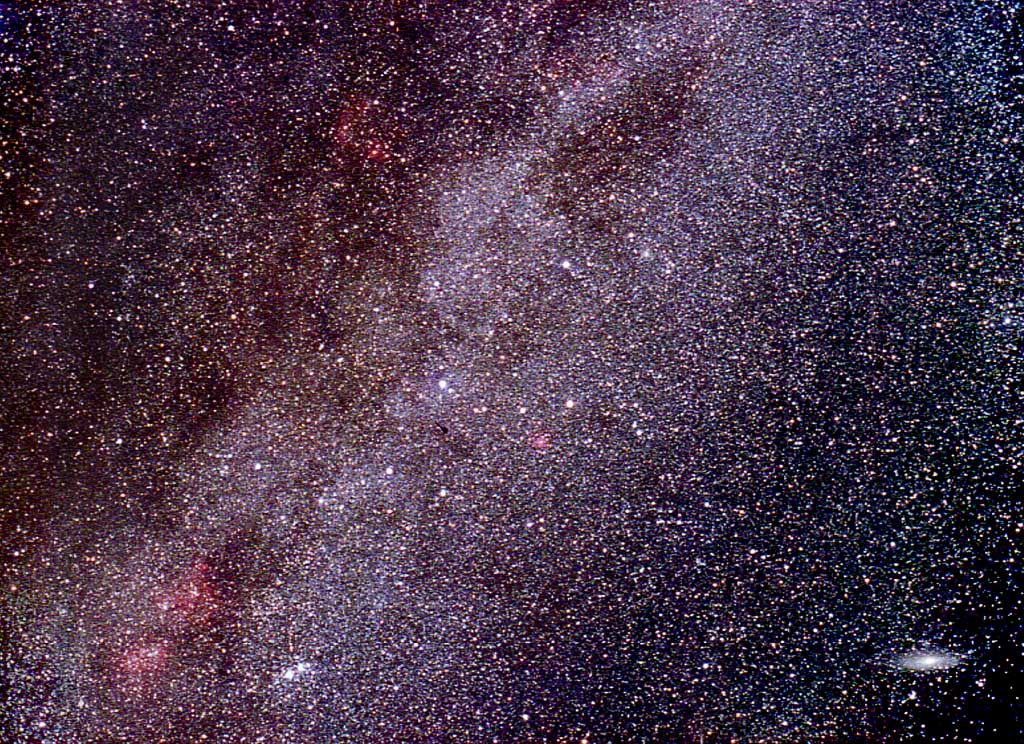
Cassiopeia is a large fall constellation which includes the northernmost portion of the Milkyway. Cassiopeia's five brightest stars form a flattened "W" or "M" shape, they are hard to locate in this photograph because of the thousands of stars visible in this photograph. In the Milkyway five red emission nebulae can be seen as well as several galactic star clusters and several extended dark nebulae. The emission nebulae are from left to right: IC 1848, IC 1805 (the "Running Dog"), NGC 7823 (two parts) and NGC 281. At the bottom to the left is the famous double-cluster in Perseus, the clusters look almost like single stars. And at the bottom right corner there is M31, the Great Andromeda Galaxy, neighbor to our own galaxy.
 Central Cassiopeia, Telelens photograph.
Central Cassiopeia, Telelens photograph.
Exposure Data